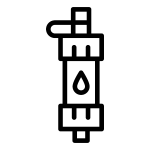When it comes to home maintenance and plumbing, learning how to remove a bathtub faucet can be incredibly useful. Whether you’re upgrading to a new design, fixing a leak, or replacing a damaged faucet, this guide will walk you through the process with clear, easy-to-follow steps.
Why You May Need to Remove a Bathtub Faucet
Before jumping into the removal process, it’s essential to understand why you may need to remove your bathtub faucet. Here are a few common reasons:
- Leaking Faucet – A dripping faucet can increase your water bill and waste water.
- Mineral Buildup – Over time, hard water can cause mineral deposits to clog the faucet.
- Faucet Damage – Cracks, rust, or other wear and tear may require a replacement.
- Upgrading to a New Faucet – Aesthetic and functional upgrades can enhance your bathroom experience.
Tools and Materials You’ll Need
To successfully remove a bathtub faucet, gather the following tools:
- Adjustable wrench
- Screwdriver (Phillips and flathead)
- Allen wrench (if needed)
- Pliers
- Plumber’s tape
- Bucket or towel (to catch excess water)
- Vinegar or a cleaning solution (for mineral buildup)
Step-by-Step Guide to Removing a Bathtub Faucet
Step 1: Turn Off the Water Supply
Before you begin, turn off the water supply to your bathtub. While most bathtubs don’t have a dedicated shutoff valve, you can turn off the main water supply in your home to prevent leaks and flooding.
Step 2: Drain the Pipes and Cover the Drain
Turn on the faucet to drain any remaining water. Place a towel or bucket under the faucet to catch excess water. Also, cover the drain with a cloth or stopper to prevent small parts from falling into it.
Step 3: Identify Your Faucet Type
There are different types of bathtub faucets, and the removal process may vary based on the type. Common bathtub faucets include:
- Slip-on spout with a set screw
- Threaded spout (screws onto a pipe)
- Diverter spout (with a built-in pull-up knob for the shower)
Step 4: Remove the Faucet Handle
- Locate the screw that holds the handle in place (usually found underneath or behind a decorative cap).
- Use a screwdriver or an Allen wrench to loosen and remove the screw.
- Gently pull the handle off. If it’s stuck, you may need to wiggle it back and forth or apply some penetrating oil.
Step 5: Remove the Faucet Spout
For a Slip-On Spout:
- Look underneath the spout for a small screw (usually an Allen screw).
- Use an Allen wrench to loosen the screw.
- Once loose, slide the spout straight off the pipe.
For a Threaded Spout:
- Grip the spout with an adjustable wrench or pliers.
- Turn counterclockwise to unscrew it from the wall pipe.
- If it’s difficult to turn, use penetrating oil to loosen the threads.
Step 6: Clean the Pipe and Inspect for Damage
Once the faucet spout is removed, clean the exposed pipe using vinegar or a cleaning solution to remove any mineral buildup. Check for rust, corrosion, or damage that may require professional repairs before installing a new faucet.
Step 7: Install a New Faucet (Optional)
If you’re replacing the faucet, follow these steps:
- Wrap plumber’s tape around the pipe threads to prevent leaks.
- Align the new faucet spout and screw or slide it into place.
- Secure with a set screw (for slip-on) or tighten with a wrench (for threaded spouts).
- Reattach the handle, ensuring all screws are tightened.
- Turn the water supply back on and test for leaks.
Tips for a Smooth Bathtub Faucet Removal Process
- If your faucet is old and corroded, apply penetrating oil and wait a few minutes before attempting removal.
- Avoid using excessive force to prevent damage to the plumbing.
- Take pictures before disassembling to help with reinstallation.
- If you’re unsure about any step, consult a professional plumber to avoid costly mistakes.
Common Problems When Removing a Bathtub Faucet and How to Fix Them
Faucet Won’t Budge
- Apply penetrating oil and let it sit for at least 15 minutes.
- Use a wrench for better grip and leverage.
Set Screw is Stripped
- Use a rubber band over the screw for better grip.
- Try a screw extractor tool if necessary.
Leaking After Reinstallation
- Ensure plumber’s tape is properly applied.
- Tighten all connections securely.
Final Thoughts
Removing a bathtub faucet may seem intimidating, but with the right tools and instructions, it’s a manageable DIY task. Whether you’re replacing a damaged fixture or upgrading your bathroom, following this step-by-step guide will help you complete the job efficiently. If you need high-quality water filters, purifiers, and other home essentials, visit Cuoll for premium products designed to improve your home’s water system! Visit our facebook for more informations.







